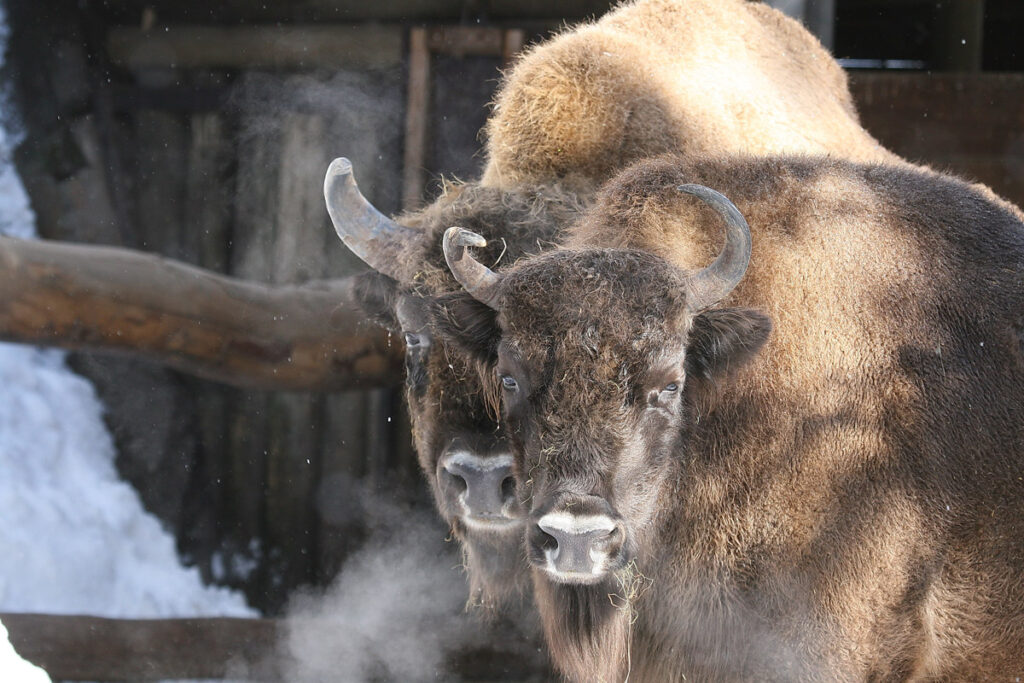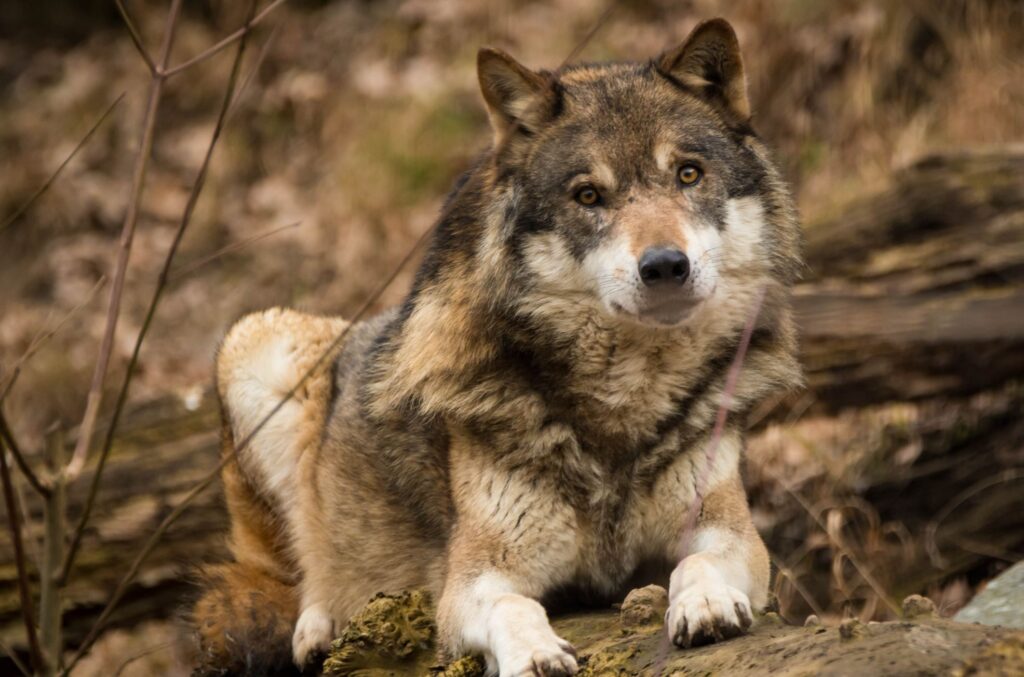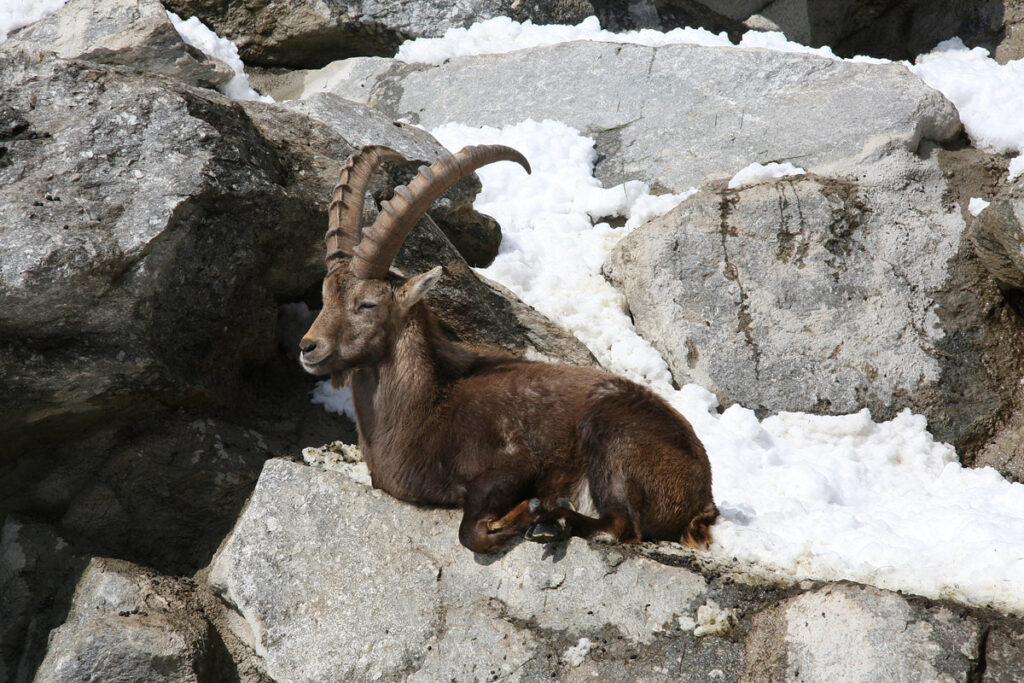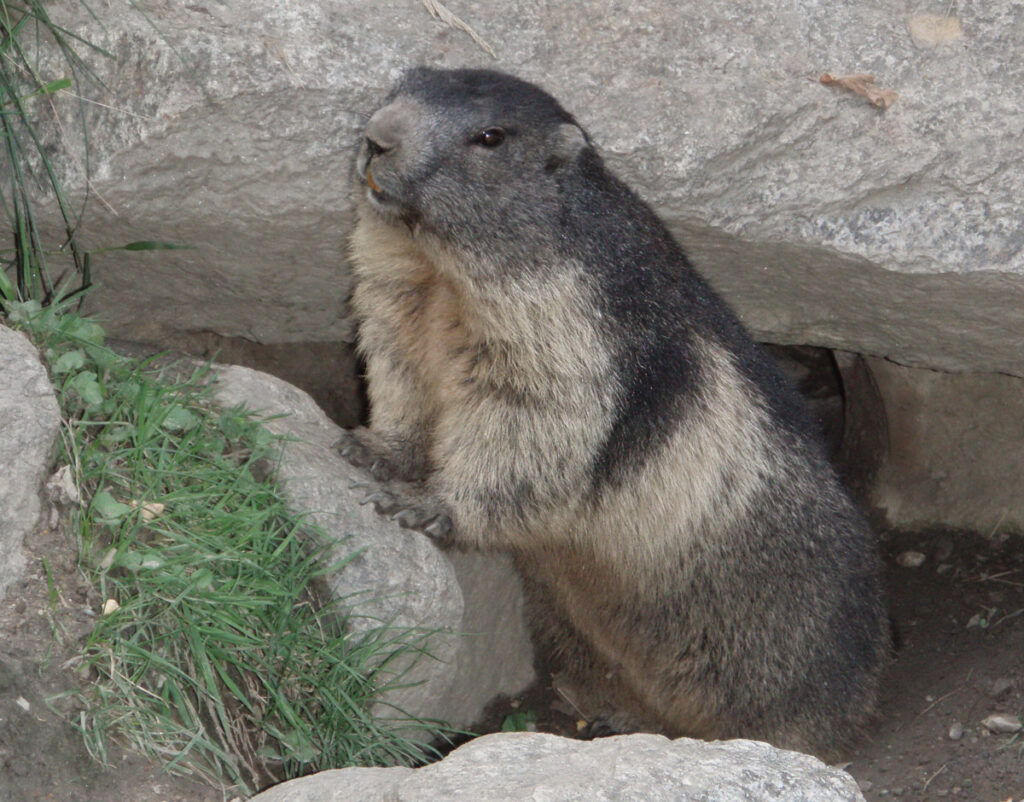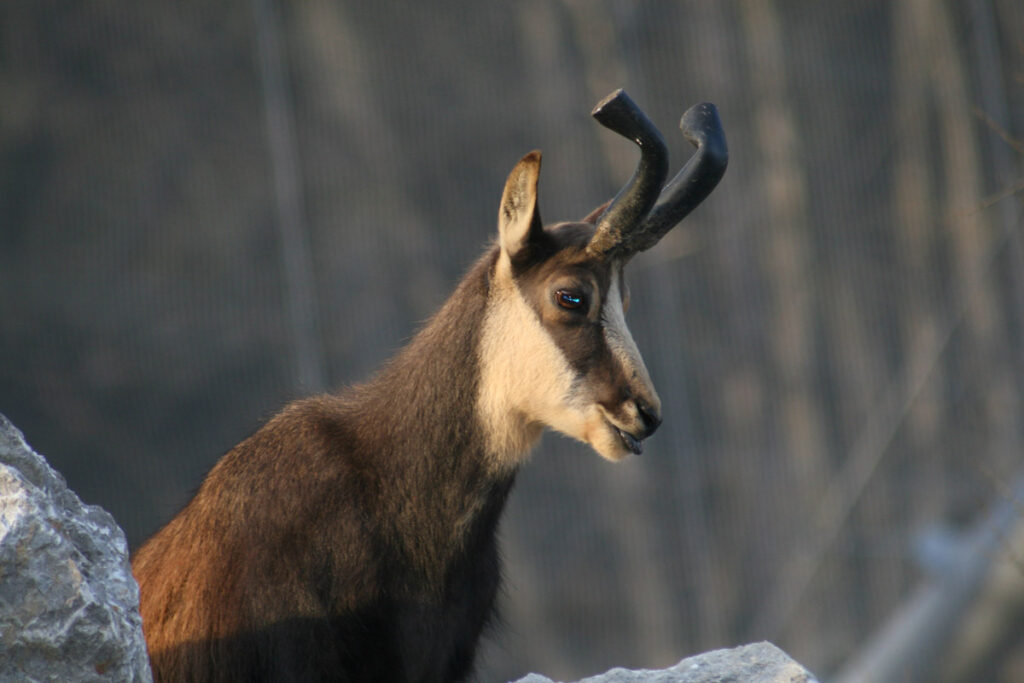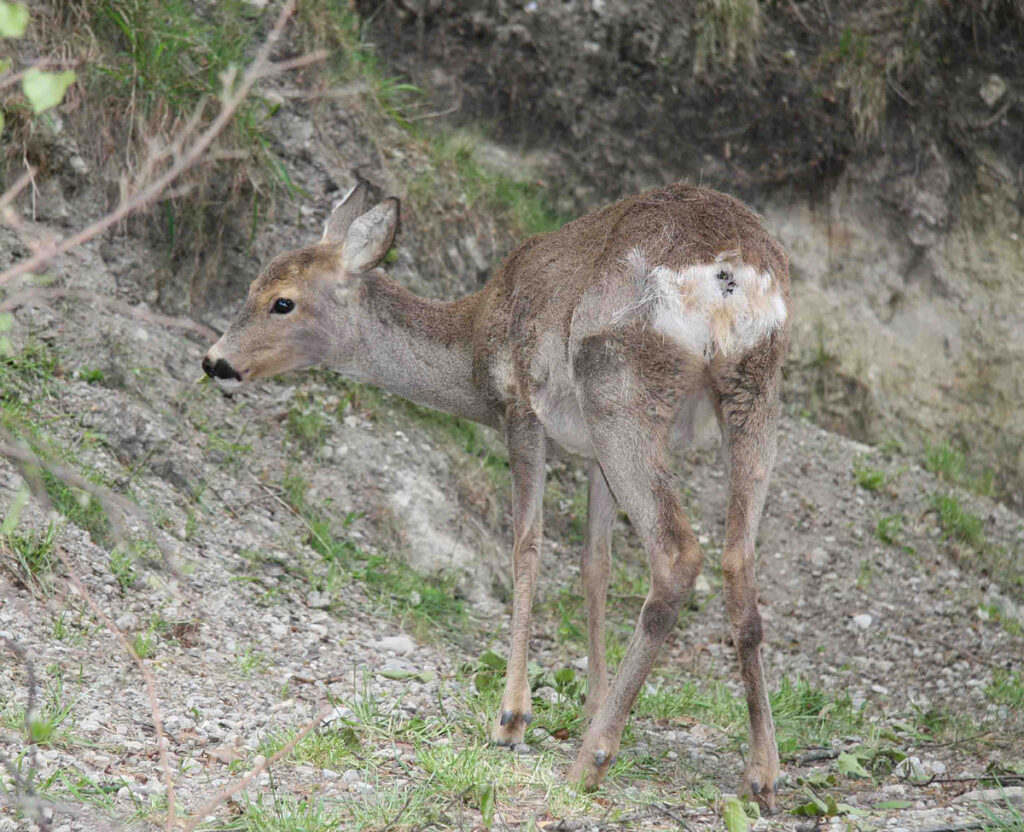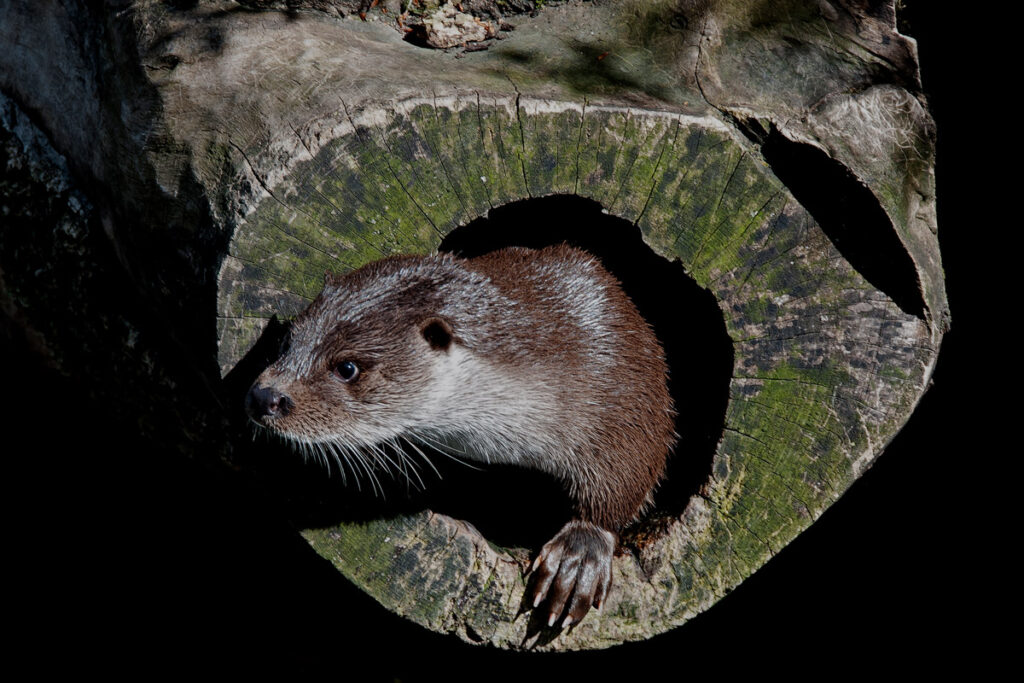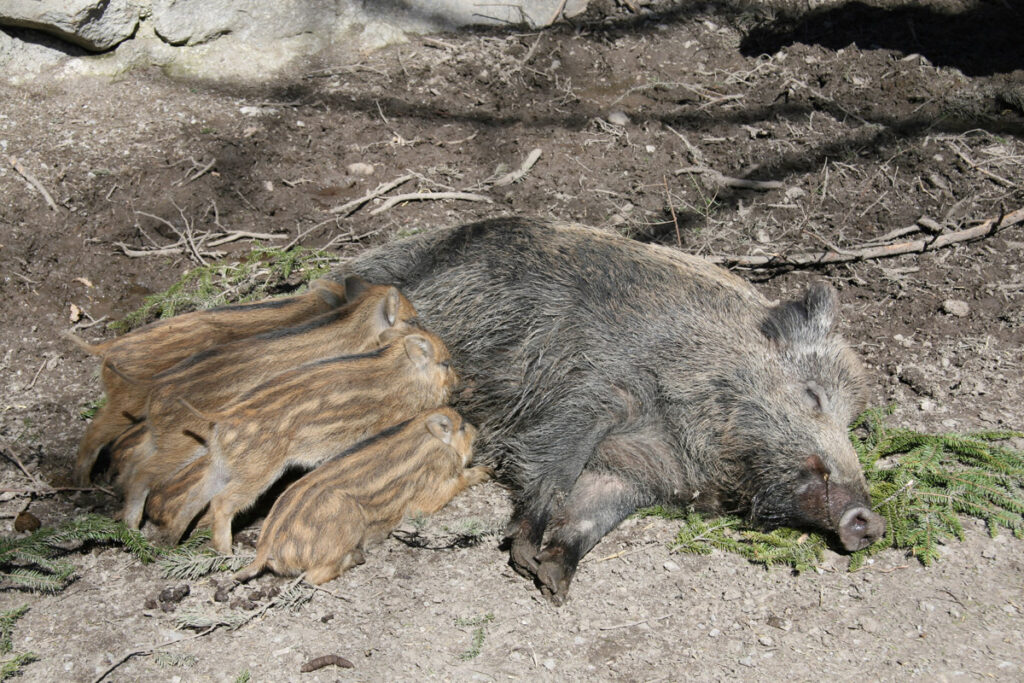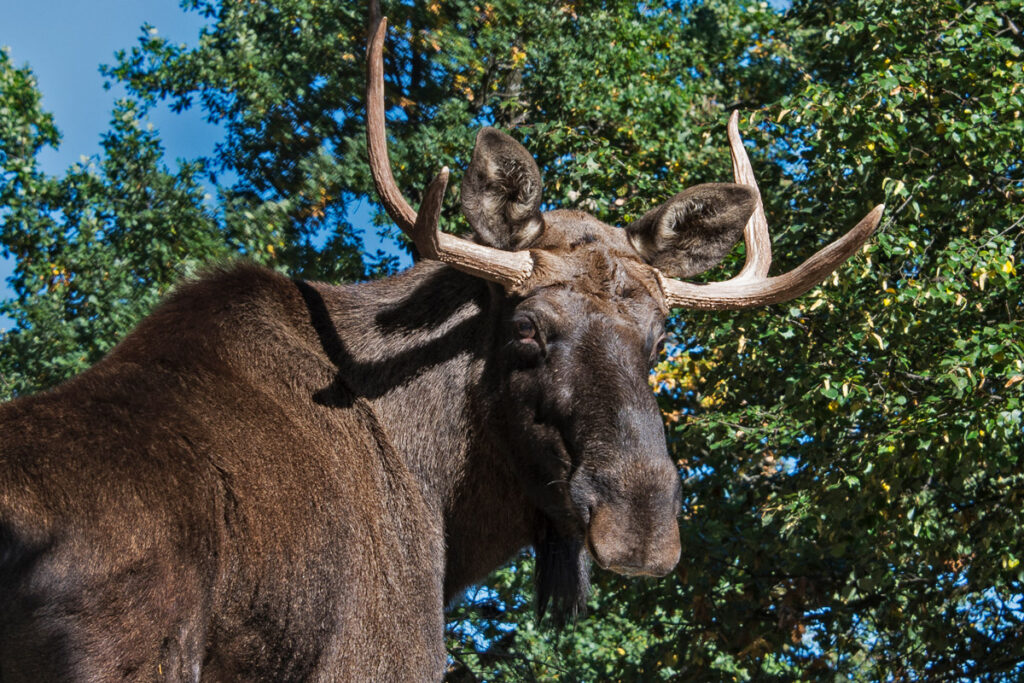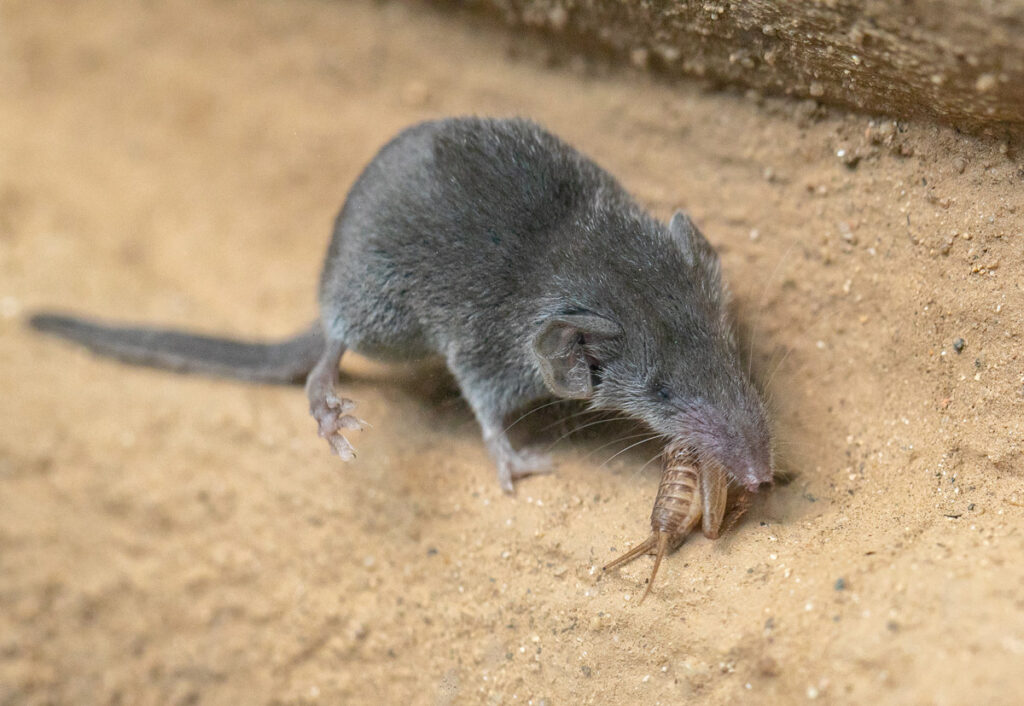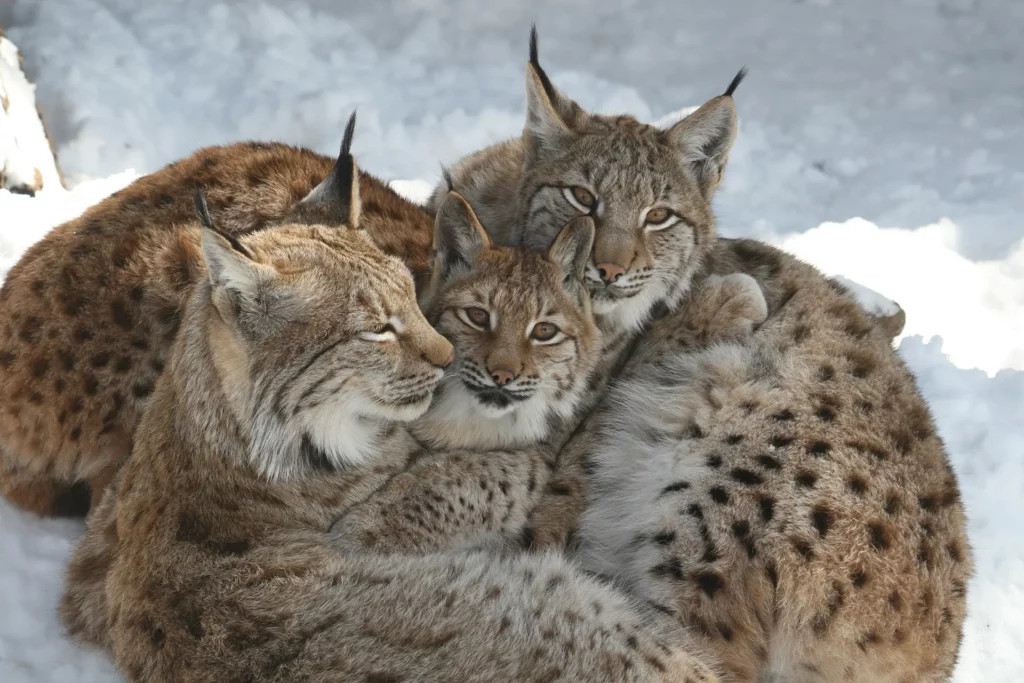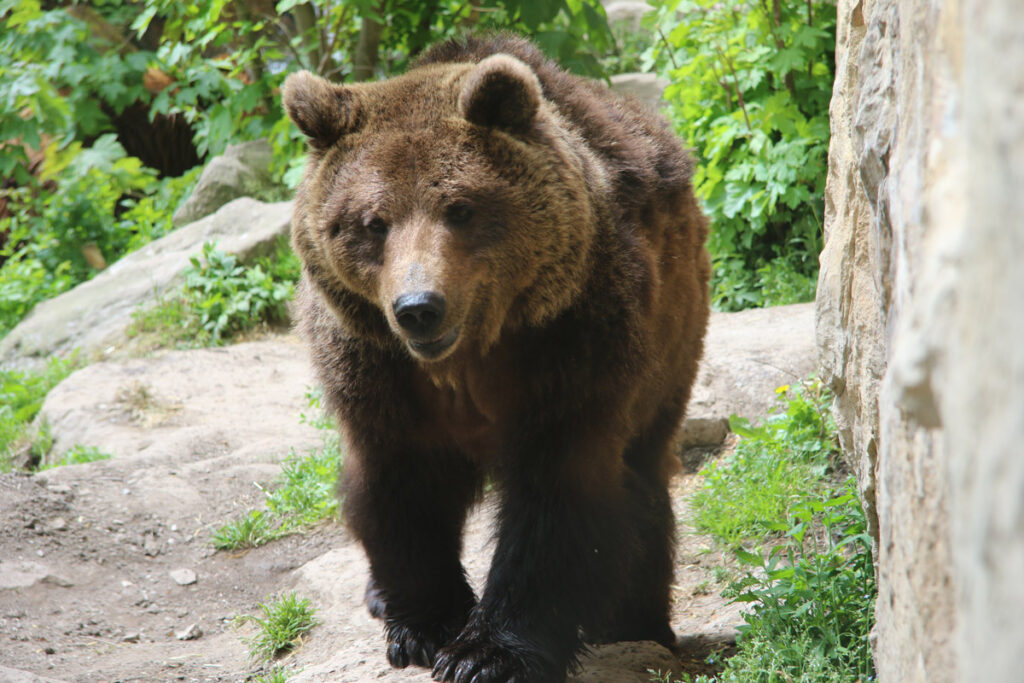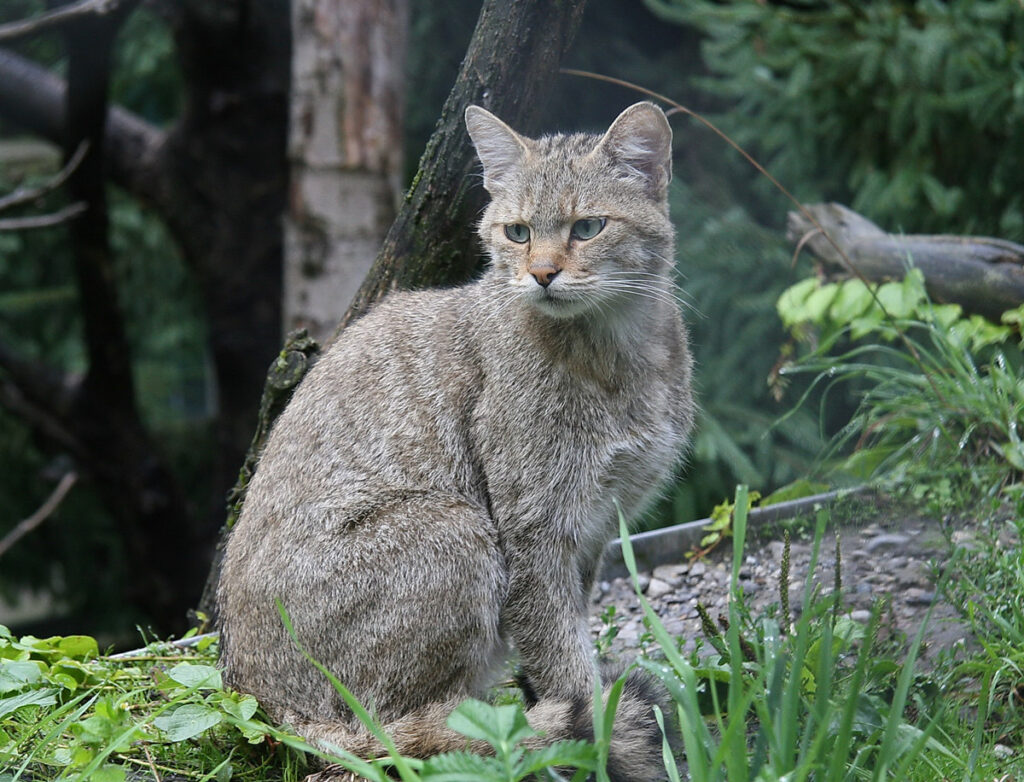Beaver
Beavers are perfectly adapted to aquatic life. They have ears and noses that can be closed with skin folds, a dense coat (up to 30,000 hairs/cm2), webbed toes on the hind legs and a flat rowing tail (= trowel-shaped). By felling trees close to the river banks, building dams and small “reservoirs”, beavers are able to reshape their environment in a sustainable way. This benefits them and many other animals, but often disturbs us humans. Beavers create 2-4 burrows. Their access is always beneath the structure (enemy protection!), but the living quarter itself is above the water level. Even in Tyrol, place names still refer to the early presence of the beaver (e.g. “Biberwier”, the “Reutte” district). Since the 1990s, traces of the beaver have been found again, and the animal is now firmly established once more in Tyrol – even reaching as far as Innsbruck along the River Inn.
- The beaver’s trowel-shaped tail is the broad, flattened, scaly tail and serves as a true multifunctional organ: it serves as a rudder when swimming, as a means of communication in case of danger by slapping the water surface, as a fat store in winter, as a support when sitting and to cool down on hot days by holding it in the cold water.
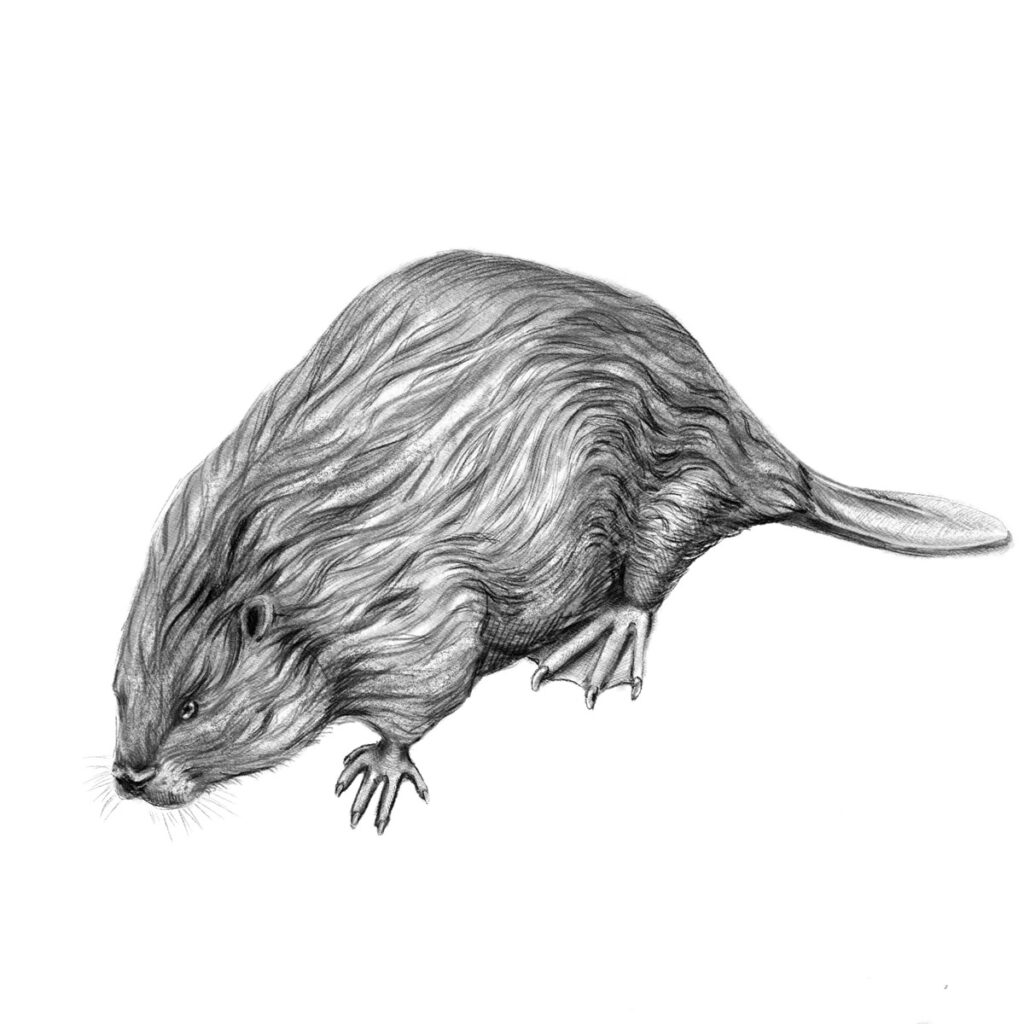
Scientific Name
Castor fiber
Age
- up to 15 years
Nutrition
- Shoots, buds & leaves
- Grasses and herbs
- Bark
- Crops
Adversaries
- White-tailed eagle
- Eagle owl
- Predatory fish
- Wolf
Weight
- 25 to 30kg
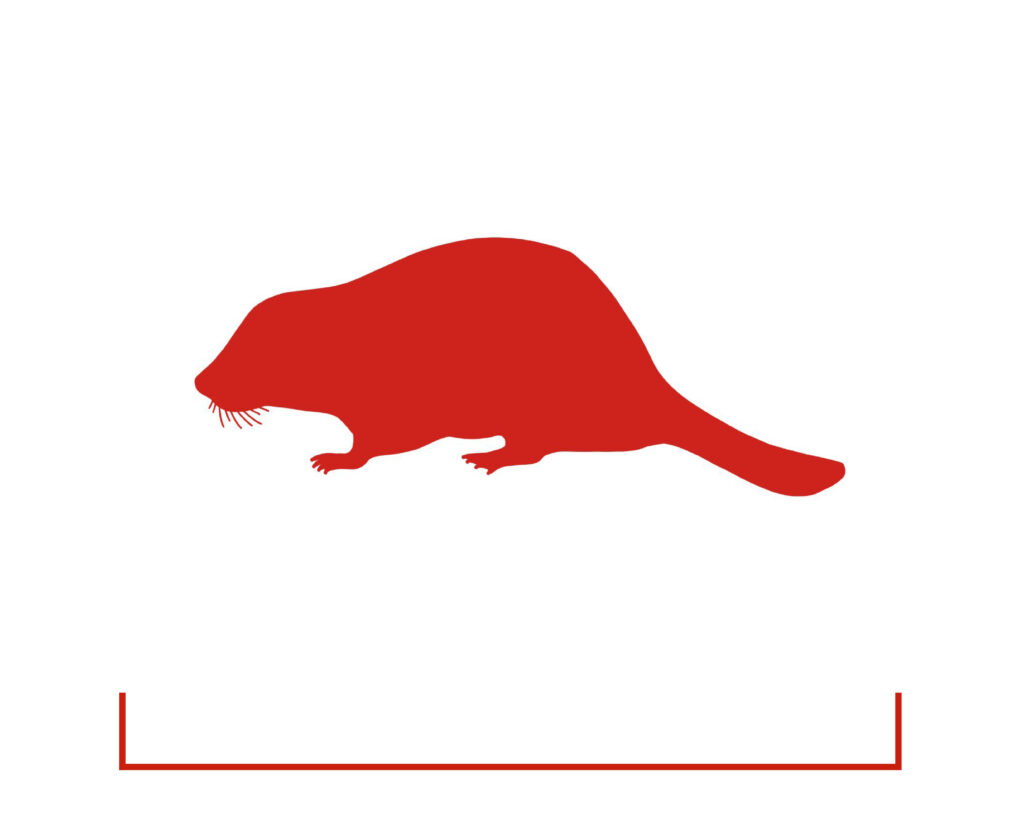
80-102 cm
Other mammals
We look forward to seeing you
Experience a fascinating world full of adventure and amazing animal encounters. Plan your visit to the zoo now and immerse yourself in the heart of nature!

